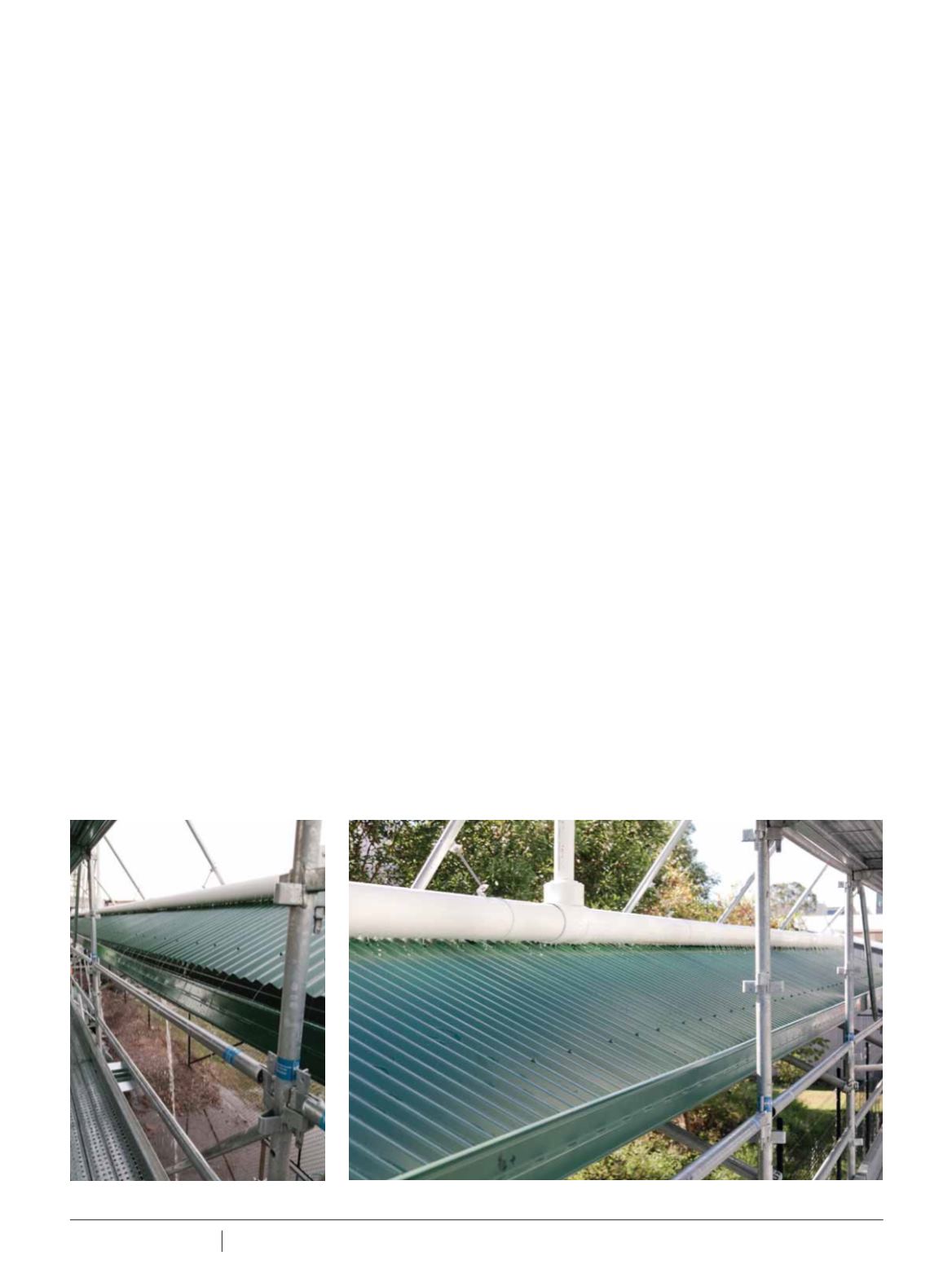

5 6
PLUMBING CONNECTION Summer 2017
TEST YOUR PRODUCT ON THE RIG
S
ince 2015 we have been
following the progress of the
National Drainage Research
Facility (NDRF), a development
resulting from the collaboration
between the Association of Hydraulics
Services Consultants (AHSCA) and the
Stormwater Research Group (SWRG)
at the University of the Sunshine Coast
(USC).
Earlier this year we reported on the
development of a national testing
protocol for grated balcony and roof
drainage outlets as well as the first
research project to put this testing
protocol into use – the quantification
of more than 20 Specialised Plumbing
Supplies (SPS) proprietary grated roof
and balcony drainage outlets under
typical Australian rainfall conditions.
Research at the NDRF continues
strongly and 2017 has seen the
formation of the AHSCA Research
Foundation – an initiative created to
manage all current and future research
projects and to develop national
education programs for all AHSCA
members. Mark Alexander accepted
the role of Chairman of the Foundation
and will be supported by Directors Ben
Rimmington and Chris Tritton. The
Foundation aims to bring continued
innovation and technical know-how to
AHSCA members as well as the broader
construction industry.
In July 2017, a new addition to the
NDRF at USC, the Residential Roof
Drainage test rig, was opened and
showcased to the Australian Building
Codes Board (ABCB) and the Australian
Plumbing Codes Committee (APCC).
The Residential Drainage test rig was
constructed as a result of an initial
research study by the SWRG and the
AHSCA into the hydraulic performance
of the “Acceptable Overflow Measures”
for eaves and gutters, as detailed in the
2016 National Construction Code (NCC).
The study assessed the suitability
of the Acceptable Overflow Measures
in real flow situations and found
that there were limitations in the
recommendations of the NCC that
could have serious consequences
for building flooding. The main
outcome from the research study
was the recommendation for further
comprehensive research to fully
investigate the applicability and
suitability of the Acceptable Overflow
Measures recommended in the 2016
NCC of the Building Code of Australia.
Consequently, the Residential Roof
Drainage test rig was constructed and a
more comprehensive study is scheduled
for 2018. Some initial testing of
standard eaves gutter profiles identified
that the minimum recommended fixing
and bracketing is insufficient and
could result in failure of the support
system when subjected to the weight
of the accumulated water in overflow
(blocked) conditions.
The Residential Roof Drainage test rig
will allow manufacturers and suppliers
to test and certify the primary flow
capacity and overflow capacities of
their products. The rig incorporates
two valley gutters and also a number
of internal and external changes of
direction that replicates an installed
environment. Testing undertaken in
other facilities has only dealt with
straight sections of eaves gutter and
Hydraulic performance for eaves and gutters allows manufacturers and suppliers to test product,
Dr
Terry Lucke
explains.
ROOF DRAINAGE -
DR TERRY LUCKE
Residential Roof Drainage Test Rig developed by AHSCA and SWRG, University of the Sunshine Coast
















